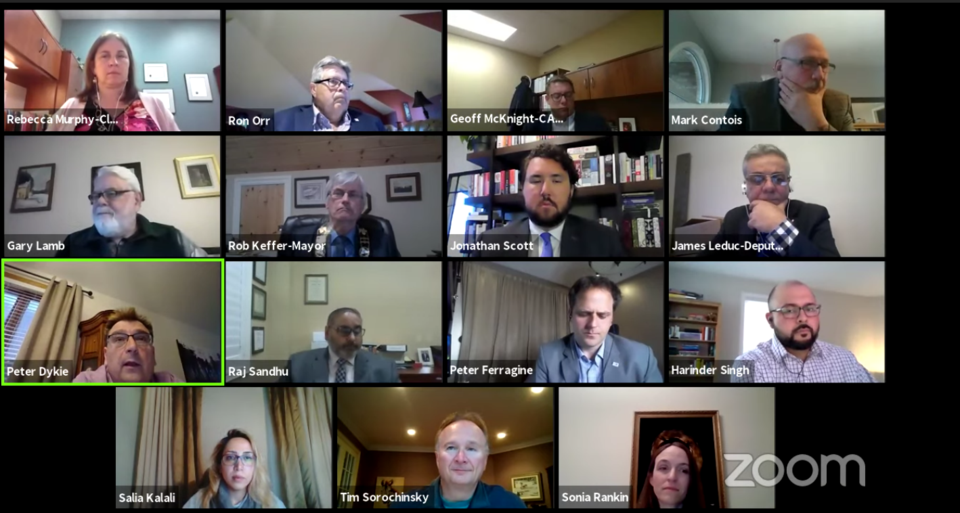The first round of public consultations for the Bradford Bypass project is underway.
"The ministry is committed to an open and transparent (environmental assessment) study process," AECOM consultant team Sonia Rankin told Bradford West Gwillimbury council Tuesday, noting that "Public Information Centre 1" commenced on April 22.
The public comment period continues until May 6, to be followed by a webinar on May 18 that will present the feedback from the first PIC, and the next steps of the project.
In a deputation at Tuesday night's meeting of council, representatives from the Ministry of Transportation (MTO) and AECOM presented a status update on the Bradford Bypass project.
"It's something that our council has been looking forward to for a very long time," said Mayor Rob Keffer, referring to the project.
Ministry of Transportation project manager Harinder Singh and area manager Salia Kalali were joined by AECOM consultant team Tim Sorochinsky and Rankin in the virtual meeting.
In September 2020, MTO began a preliminary design update study, building on the approved 2002 Environmental Assessment (EA) for the bypass, a 16.2-kilometre freeway connecting Highways 400 and 404.
The project includes five interchanges at Highway 400, County Road 4 (Yonge Street), Bathurst Street, Leslie Street and Highway 404. Grade-separated crossings are planned for 10th Sideroad, Professor Day Drive and Artesian Industrial Parkway/CN Rail line in Bradford.
The project is expected to help address current and future transportation needs in Simcoe County and York Region, and relieve congestion on existing local roads. It is estimated that the bypass will save motorists approximately 35 minutes per trip.
Noted Kalali, "Transportation-related construction is vital to Ontario's economic recovery especially in the years following the COVID-19 pandemic", by supporting travel demands, the movement of goods and ongoing urban development.
The preliminary design EA update study will include field investigations, impact assessment/mitigation, and adherence to environmental commitments, Council was told.
The MTO will consider all impacts to environmentally significant areas and will work with environmental agencies, municipalities and concerned stakeholders to mitigate the impacts of building the highway, "with specific attention to the Holland River area wetlands and the greenbelt," the presentation noted, and the Bradford Bypass preliminary design and class EA will adhere to all new and existing provincial and federal legislation, including but not limited to the Endangered Species Act (ESA, 2007), Greenbelt Plan, Heritage Act, Fisheries Act, Species at Risk Act (SARA, 2002), and Lake Simcoe Protection Act.
To limit the impacts, the proposed highway will cross the Holland Marsh Provincially Significant Wetland (PSW) at its narrowest point - where the crossing is only one km across.
The area impacted is 10.75 hectares in size, which is about 0.375 percent of the entire wetland area, council was told.
The presentation also outlined the study process, which includes consultation with the public, regulatory agencies and Indigenous communities.
Those next steps will include refinement of route alignment, completion of traffic analysis, identification of interchange types, ongoing field investigations, preliminary design and final reports, to be completed by the end of 2022.
Since the study notification in September 2020, over 230 comments have been received, and 430 contacts added to the project contact list.
Municipal requests received so far include the addition of an interchange at 10th Sideroad, consideration of noise barriers at Yonge, and access from the bypass to County Road 88, at Highway 400.
"This is a project that has been on our books for a long time, we are excited about this. It's going to be fantastic for all of us and an economic boom for all of the area - York Region, Simcoe County and even further north," said Deputy Mayor Leduc after the presentation.
He suggested changing the name of the project from "Bradford Bypass" to "400-404 Link", noting that "bypass" suggests drivers will "drive through" Bradford, instead of stopping in to "say hi."
Councillor Gary Lamb noted that traffic is often backed up on the existing routes, and that stalled traffic burns more gas. The bypass, he said, will be "a boon to the economy because it saves time and fuel."
He expressed confidence that mitigation efforts will "save the turtles," and concluded, "Thank you - and get that project going tomorrow."
Councillor Peter Ferragine pointed out that the project has the support of Holland Marsh farmers.
"This is going to help them move product," he said, urging those who oppose the project to look into the facts, and then "add your input, to help make it as good as possible."
"As an Indigenous person, I think you are doing the responsible thing," Councillor Mark Contois told the MTO representatives, noting that at present there is a single route into Bradford from York Region, and "when there's one accident, you're basically sitting there for hours."
Idling vehicles on congested roads, Contois said, are more damaging than vehicles that pass through on a highway.
Council received the presentation, expressing strong support for the project, and requesting that MTO consider replacing the proposed grade-separated crossing at 10th Sideroad with an additional interchange. Council also approved an amendment to the motion encouraging the MTO to continue to work with the Ministry of Natural Resources, Ministry of Environment, Conservation Authority and municipalities to provide secondary benefits that can include conservation and active transportation.
You can learn more about the project at bradfordbypass.ca, call 1-877-247-6036, or email [email protected].
